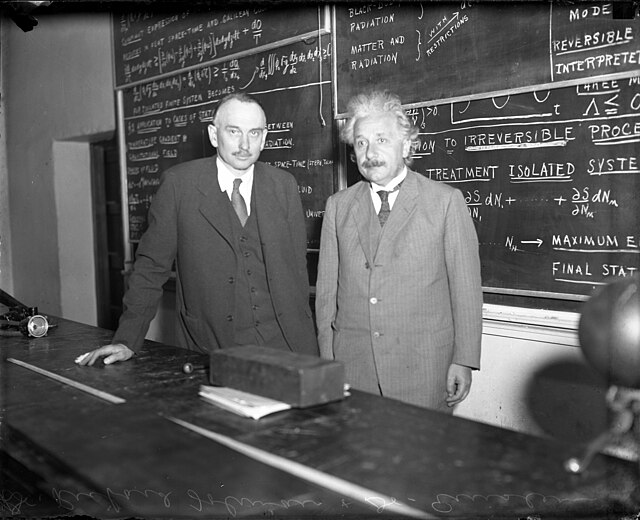
Einstein’s brilliance wasn’t immediately evident in his early school days. His unconventional thinking and rebellious spirit often clashed with the rigid structure of the traditional education system. His teachers, unable to fathom the depth of his intellect, dismissed him as a dreamer. Yet, in the quiet corners of his mind, Einstein was unraveling the secrets of the cosmos.
His struggles in school were not solely due to a lack of intelligence but rather a clash of ideologies. Einstein believed in learning through exploration and imagination, an approach that set him apart from his peers. This rebellious nature, coupled with an unyielding passion for knowledge, propelled him forward despite the challenges he faced.
Einstein’s Journey to Polytechnic Institute in Zurich
As the confines of Ulm became too limiting for his boundless intellect, Einstein set his sights on the renowned Polytechnic Institute in Zurich. This decision marked a turning point in his life, as he embarked on a journey that would shape the course of scientific history.
Entering the Polytechnic Institute was not without its hurdles. Einstein had to prove his mettle in the entrance exams, showcasing his mastery of mathematics and physics. His determination prevailed, and in 1896, he found himself immersed in the vibrant academic atmosphere of Zurich. Here, under the guidance of brilliant professors, Einstein’s mind expanded further, delving into the intricacies of theoretical physics.
The Polytechnic Institute became the crucible in which Einstein’s scientific identity was forged. It was here that he honed his skills, questioned established theories, and cultivated the revolutionary ideas that would later blossom into his groundbreaking theories of relativity. The journey from Ulm to Zurich was not just a geographical transition but a transformative odyssey that laid the foundation for Einstein’s indelible mark on the scientific world.
Special Relativity: A Paradigm Shift in Physics

At the turn of the 20th century, the scientific world found itself grappling with a profound mystery. The Michelson-Morley experiment, conducted in 1887 to detect the Earth’s motion through the luminiferous ether, produced perplexing results. The anticipated changes in light speed, based on Earth’s presumed motion through space, were nowhere to be found. This experimental anomaly threw the established framework of classical physics into disarray, heralding a crisis that demanded a visionary mind to unravel.
Albert Einstein, already immersed in his exploration of theoretical physics, seized upon this enigma. In 1905, he published his groundbreaking paper on Special Relativity, challenging the very fabric of Newtonian mechanics. Einstein posited that the speed of light is constant for all observers, regardless of their motion relative to the light source. This bold proposition shattered the conventional understanding of space and time, opening the door to a new era in physics.
Unveiling the Equivalence of Energy and Mass
E = m * c²
Mass Energy equivalence
The equation E=mc², arguably the most famous formula in the realm of physics, emerged as a consequence of Einstein’s Special Relativity. In a stroke of unparalleled insight, Einstein unveiled the equivalence of energy (E) and mass (m), forever altering our perception of the fundamental building blocks of the universe.
This iconic equation implies that mass and energy are interchangeable and interconnected on a profound level. It illuminated the potential for converting matter into energy and vice versa, laying the groundwork for revolutionary advancements in nuclear physics. The atomic bomb, nuclear energy, and myriad technological marvels owe their existence to Einstein’s revelation of the inherent unity of mass and energy.
The Concept of Spacetime: Redefining Space and Time
Einstein’s Special Relativity didn’t just reshape our understanding of motion and energy; it introduced the concept of spacetime. Instead of treating space and time as separate entities, Einstein proposed an elegant fusion that encapsulated both in a four-dimensional continuum.
According to this novel perspective, gravity isn’t merely a force acting at a distance, as envisioned by Newton. Instead, massive objects bend the fabric of spacetime, influencing the paths of other objects nearby. This conceptual shift explained gravitational phenomena with unparalleled precision, from the orbits of planets to the bending of light around massive celestial bodies.
In essence, Einstein’s Special Relativity was a seismic shift in the foundations of physics, ushering in a new era of understanding where time and space became intertwined, mass and energy became interchangeable, and the mysteries of the cosmos were approached with a fresh perspective. The humble beginnings in Ulm had led to an intellectual journey that forever altered the trajectory of scientific thought.
Gravitational Waves: Predictions and Observations

Einstein’s journey into the cosmos didn’t end with Special Relativity; it reached its zenith with the development of General Relativity in 1915. One of the most intriguing predictions of this new theory was the existence of gravitational waves—ripples in spacetime caused by the acceleration of massive objects. At the time, these waves were considered a theoretical curiosity, seemingly impossible to detect directly.
Decades later, however, advancements in technology and the construction of sophisticated instruments, such as LIGO (Laser Interferometer Gravitational-Wave Observatory), allowed scientists to observe the elusive gravitational waves for the first time in 2015. This monumental discovery not only validated Einstein’s predictions but also opened a new era in astrophysics, providing a novel tool to explore the cosmos and detect cataclysmic events like the collision of black holes and neutron stars.
Einstein’s Encounter with the Eclipse of 1919

In 1919, a celestial event presented an opportunity to test the predictions of General Relativity. A total solar eclipse was set to occur, and Einstein’s theory posited that massive objects, such as the sun, could bend the path of light. Sir Arthur Eddington, a British astrophysicist, led an expedition to Principe and Sobral to observe the eclipse and measure the deflection of starlight passing near the sun.
The results of these observations, announced in 1919, were nothing short of revolutionary. The bending of starlight during the eclipse matched Einstein’s predictions, providing empirical evidence for the validity of General Relativity. The world was astounded, and Einstein ascended to scientific celebrity, his theories vindicated on a global stage.
The Mathematics of Curved Spacetime: A Triumph of Theoretical Physics
Einstein’s General Relativity introduced a profound shift in the understanding of gravity. Instead of the traditional gravitational force acting across space, Einstein proposed that massive objects curve the fabric of spacetime itself. The mathematics underlying this concept involved intricate equations that described the curvature caused by mass and its effect on the motion of objects.
Einstein’s field equations, as they came to be known, were a triumph of theoretical physics. The complexity of these equations presented a formidable challenge, requiring a deep understanding of mathematics and physics. Yet, they laid the groundwork for explaining gravitational phenomena on cosmic scales, from the behavior of planets to the expansion of the universe.
In summary, General Relativity not only revolutionized our understanding of gravity but also paved the way for the exploration of the cosmos through gravitational waves. The eclipse of 1919 served as a pivotal moment, confirming the validity of Einstein’s theories and propelling him to iconic status. The mathematical elegance of curved spacetime remains a testament to the power of human intellect in unraveling the mysteries of the universe.
Einstein’s Enduring Influence on Physics

Albert Einstein’s impact on the field of physics is nothing short of revolutionary and enduring. His contributions to both Special and General Relativity reshaped the landscape of theoretical physics, providing a new framework for understanding the fundamental forces governing the universe. The equations he formulated not only explained previously unexplained phenomena but also predicted new ones, guiding the direction of scientific inquiry for generations to come.
Einstein’s work has become a cornerstone of modern physics, influencing diverse areas such as cosmology, quantum mechanics, and astrophysics. The application of his theories has led to practical technologies like GPS, and his ideas continue to inspire groundbreaking research in the quest to comprehend the mysteries of the cosmos.
Beyond his profound contributions to theoretical physics, Einstein played a pivotal role in popularizing science for the general public. Known for his ability to distill complex ideas into accessible concepts, he made the wonders of the universe understandable to a broader audience. Through his writings, public lectures, and interviews, Einstein demystified scientific principles, fostering a greater appreciation for the beauty and elegance of the natural world.
Einstein’s knack for communication transcended the academic realm, reaching people from all walks of life. He believed in the democratization of knowledge and sought to bridge the gap between the scientific community and the general public. His efforts laid the groundwork for a broader societal engagement with science, influencing subsequent generations of scientists and science communicators.
Einstein’s impact extends far beyond the scientific realm; he became a cultural icon and a symbol of intellectual prowess. His distinctive image, with wild hair and thoughtful expression, has become synonymous with genius. Einstein’s name is often invoked in discussions on creativity, curiosity, and the pursuit of knowledge.
Throughout the 20th century and beyond, Einstein’s life and persona inspired literature, art, and popular culture. His quotes are widely cited, and his name is used as shorthand for brilliance. The enduring fascination with Einstein transcends his scientific achievements, encompassing his advocacy for social justice, pacifism, and humanism.
In conclusion, Albert Einstein’s legacy is multi-faceted. His enduring influence on physics has shaped the trajectory of scientific inquiry, while his commitment to making science accessible has ignited curiosity and interest in the broader public. Einstein’s cultural impact and iconic status make him a symbol of intellectual curiosity, leaving an indelible mark on the collective consciousness of humanity.
